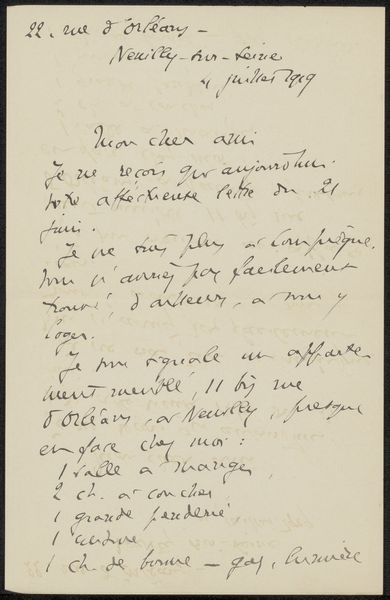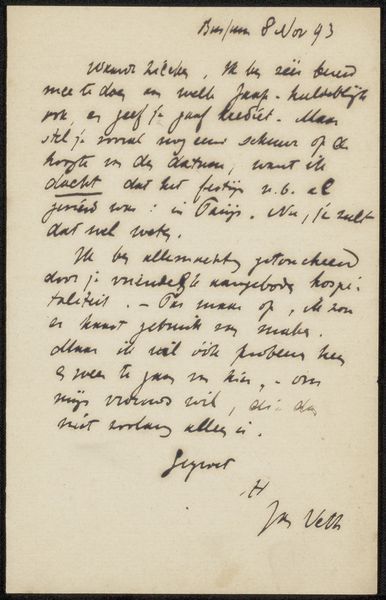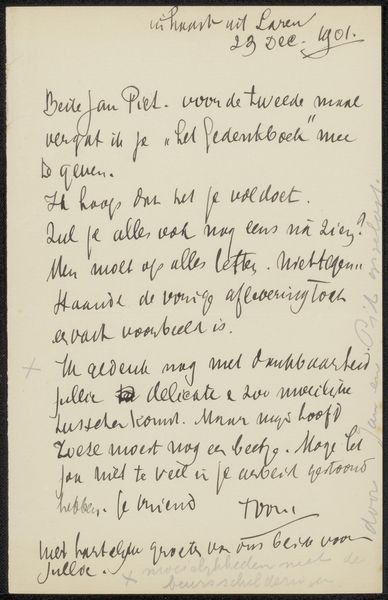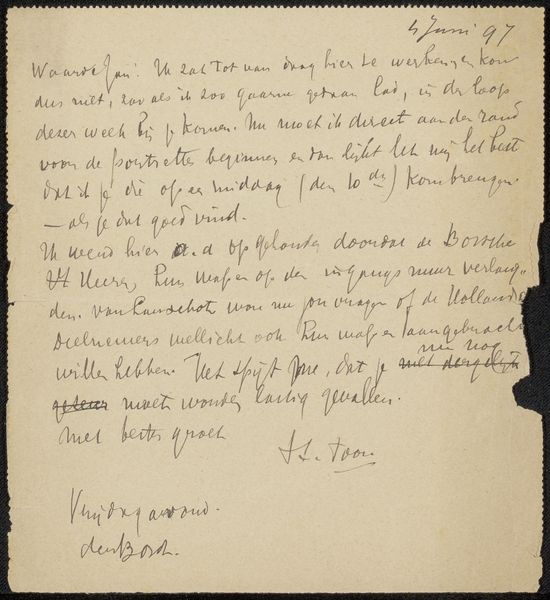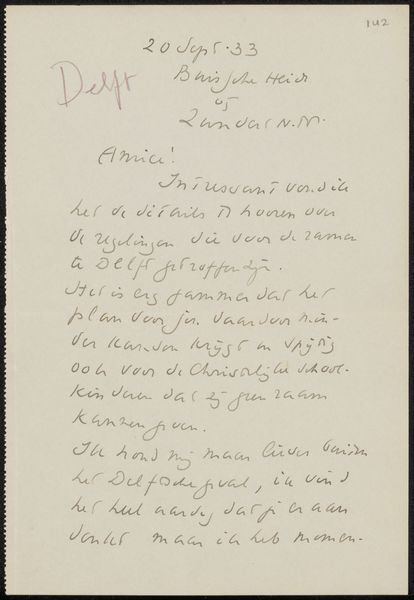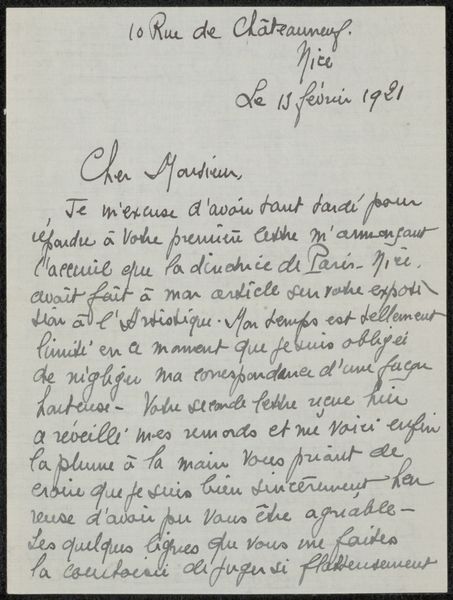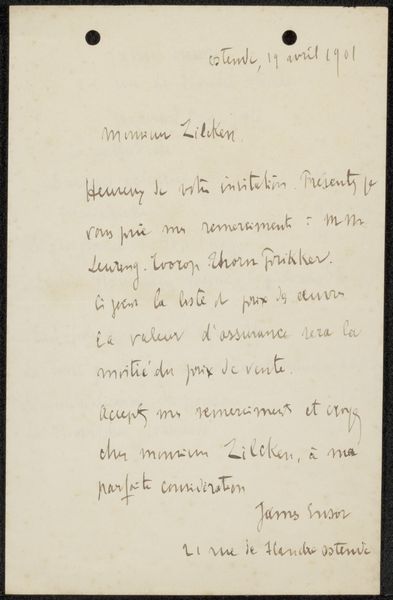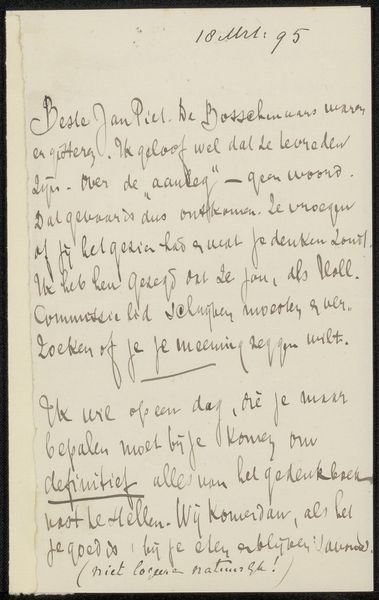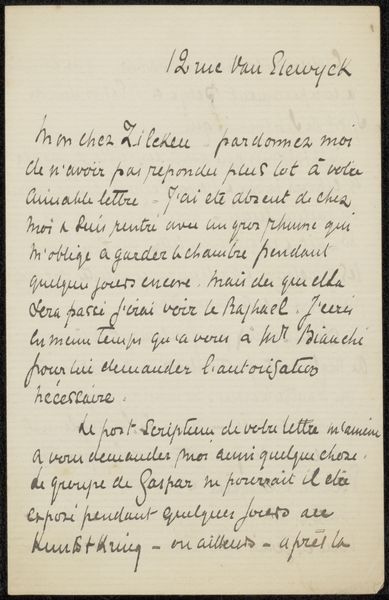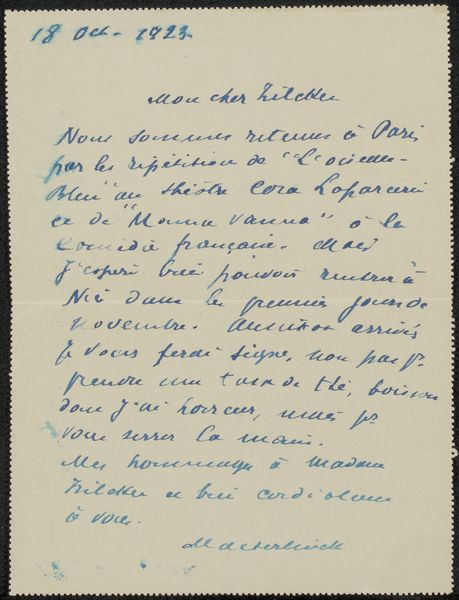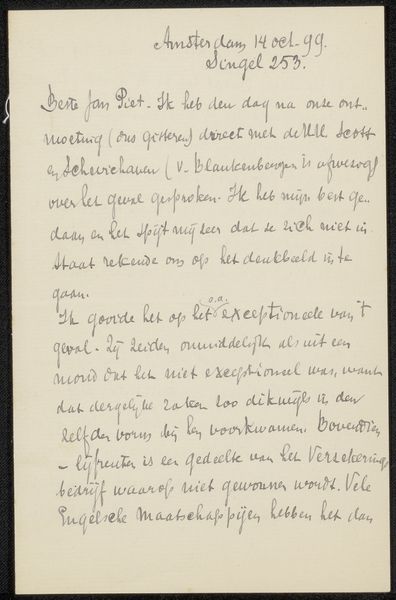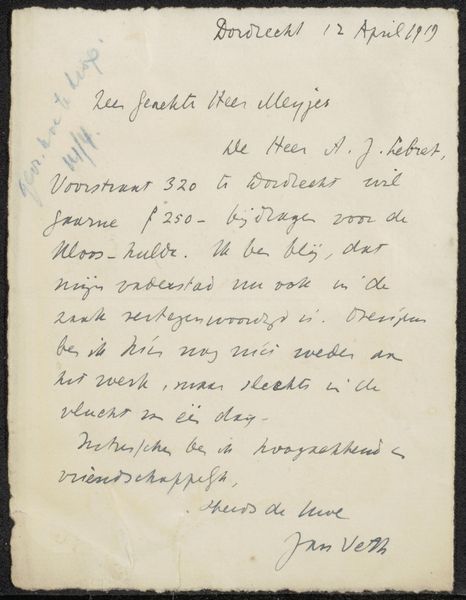
drawing, paper, ink, pen
#
portrait
#
drawing
#
pen drawing
#
dutch-golden-age
#
paper
#
personal sketchbook
#
ink
#
hand-drawn typeface
#
pen work
#
pen
Copyright: Rijks Museum: Open Domain
Editor: This work, "Brief aan Philip Zilcken," is possibly from 1896, made by Frits Roosdorp, using pen and ink on paper. It’s a handwritten letter, evoking a sense of intimacy. What do you see in this piece beyond its literal content? Curator: Beyond its surface, the letter becomes a potent artifact, whispering stories about social networks and intellectual exchanges of its time. I'm interested in what the act of handwriting signifies. How does it differ from a typed message, in terms of power dynamics, intention, and accessibility, specifically within the cultural moment in which this was created? Editor: That's interesting. I hadn't considered the implications of handwriting itself. Is it a statement in its own right? Curator: Exactly! The deliberate choice of handwriting speaks volumes, possibly reflecting an era valuing personal touch, direct communication and unique expressions before mass production standardized communication. Who were Roosdorp and Zilcken in relation to each other? Was there a hierarchy, perhaps gendered or class-based, influencing the form and content of this "brief"? What theories about social performance might be relevant here? Editor: So, examining their relationship and social context could unlock a deeper understanding. The Dutch Golden Age was so dominated by wealthy elites... I guess that wealth comes with unique ways of showing one's expression. Curator: Indeed. Let's consider how their status afforded them the luxury of time and materials for handwritten correspondence, and then how the exchange further solidified their place in a particular social strata. This one letter can tell us much about who held the power in those days! Editor: I never considered a letter to be a possible tool for studying social power. Curator: Texts like this open a portal to examining marginalized voices absent from dominant narratives. These letters act like pieces of evidence, providing insight into a past still relevant today. Editor: I will be sure to think more carefully on all the layers contained in letters! Thanks.
Comments
No comments
Be the first to comment and join the conversation on the ultimate creative platform.
